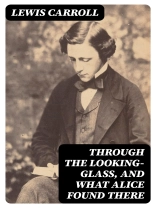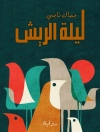In ‚Through the Looking-Glass, and What Alice Found There, ‚ Lewis Carroll constructs a whimsical yet profound sequel to his beloved ‚Alice’s Adventures in Wonderland.‘ This novel is marked by its playful use of language, inventive verse, and intricate wordplay, embodying the nonsensical logic that defines Carroll’s literary style. The narrative unfolds in a fantastical realm where time runs backward, exploring themes of identity, transformation, and the nature of reality through a series of dreamlike encounters. This richly layered work serves as both a captivating tale for children and a sharp commentary on the adult world, reflecting Victorian anxieties and philosophical questions.
Über den Autor
Lewis Carroll, born Charles Lutwidge Dodgson on January 27, 1832, was an English writer famed for his creation of the fantasy world in ‚Alice’s Adventures in Wonderland‘ and its sequel ‚Through the Looking-Glass, and What Alice Found There‘ (1871). Carroll’s literary genre is often deemed as literary nonsense, a genre which creates meaning from the ostensibly nonsensical, a talent that Carroll mastered. His work in ‚Through the Looking-Glass‘ continues the adventures of Alice, showcasing his unique ability to weave together the logical with the illogical. A mathematician and logician by profession, Carroll’s written work reflects his dexterity with word play, logic, and fantasy. His contributions extended beyond children’s literature, including ‚The Hunting of the Snark‘ (1876), a whimsical nonsense poem, and ‚Sylvie and Bruno‘ (1889), a two-part novel. Carroll’s inventive use of the English language, his imaginative narratives, and the thematic depth of his works have made a perpetual impact on literature, influencing a wide range of genres and generations of writers. Scholarship surrounding his works often delves into Carroll’s intricate weaving of satire, poetry, and philosophical musings, solidifying his legacy as a pioneer in the literary world, curiously intertwining reality with the fantastical, much like Alice’s journey through the looking glass itself.












